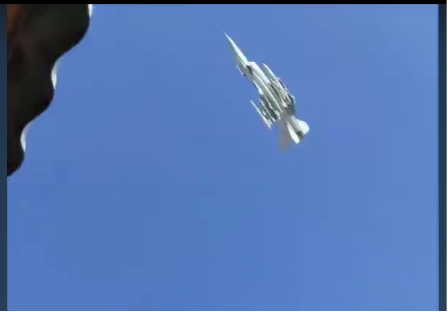The US Department of Defense (DoD) 2025 budget request, that was submitted to Congress at the end of March, included a plan for the Air Force to divest itself of around 250 airframes with projected savings of more than $2 billion.
In response the US House Armed Services Committee has produced its own plan by way of the 2025 National Defense Authorization Act (NDAA) which was released on Monday, May13. It says this plan is based on its own assessment of future warfighting requirements. While its plan for US military aviation directly opposes some of the Pentagon’s requests, it still has the potential to release aircraft which could provide Ukraine with the additional aircraft needed for its war with Russia.
JOIN US ON TELEGRAM
Follow our coverage of the war on the @Kyivpost_official.
The US military issues website Defense News said that the Air Force plan included retiring 32 F-22 Raptor fighter aircraft, which it says are no longer cost effective to maintain and to reduce its buy of F-15EX Eagle II multirole strike fighters. The NDAA proposes to reverse those decisions, which it also did for the F-22s in the DoD’s 2023 budget plan. A congressional staffer said that decision was because the Committee considers the Raptor is “… still the best air superiority jet we have in the world today.”
The NDAA intends to add an extra $271 million back into the budget to buy an additional 24 F-15EXs in 2026, as it considers it vital for the manufacturer Boeing to keep the production line for the advanced fourth-generation fighter active.

Rosneft Refinery, Engels Airbase Targeted in Ukraine’s Massive Drone Assault
The NDAA also put a pause on plans to retire 26 F-15E Strike Eagles until the Air Force produces more details on how it will meet its global operational commitments. The Pentagon believes that the funds saved by removing this quantity of aircraft would help fund upgrades to the remaining fleet allowing them to replace their less effective Pratt and Whitney engines. The same staffer said the F-15Es would have an important role to play in the event of a confrontation with China.
Potentially of more interest to Ukraine are other retirements put forward by the Air Force and accepted in the NDAA, which includes 11 F-16 C/D multi-role fighter aircraft, 56 A-10 Warthog ground attack aircraft, and 65 F-15C/D Eagle air superiority fighters.
The Air Force says the A-10 attack plane is too vulnerable against modern battlefield air defenses and plans to retire the entire fleet by 2029. Retiring the A-10s had been resisted by Congress for several years but it now seems to accept the DoD argument.
Some commentators, including Luke Coffey, a senior fellow at the Hudson Institute, told the Defense One website that the aircraft could still be effective, against Russian forces which are increasingly having to rely on Soviet-era weapons systems that the A-10 was designed to defeat, if they had the right battlefield support and protection that the F-16 and other modern weapons could provide.
A former F-16 pilot told Kyiv Post that, while the A-10 is a superb close air support aircraft built around a 30mm anti-tank gatling gun, it is assessed by USAF, and apparently the military leadership in Ukraine, to be highly vulnerable to the S-300 and S-400 surface-to-air missiles (SAMs) currently fielded by Kremlin forces.
The possibility of passing the A-10s to Ukraine was first discussed shortly after the full-scale Russian invasion and on several occasions since. As recently as April this year Air Force Secretary Frank Kendall told the House Armed Services Committee that “Ukraine hasn't expressed much interest [in the A-10]. I think they, rightfully, are concerned about their survivability.”
Ukraine’s long-stated need for the F-16 has gathered new urgency with the appearance of long-range aerial glide bombs that are increasingly being launched by the Russian Air Force from warplanes beyond the range of the majority of Ukraine’s air defenses.
Currently the F-16 coalition formed by NATO nations led by Denmark and the Netherlands, has committed to sending around 45 of the fighters to Ukraine, enough for three small squadrons, with the first arrivals expected by the end of the summer. If the US were to add the 11 F-16 C/Ds to the pool it would significantly improve the potential impact of the aircraft on Ukraine’s warfighting capability.
While the US eventually gave its approval for F-16s to be passed to Ukraine from NATO users, it has to date not offered any of its own and has continued to show a reluctance to provide Ukraine with longer-range weapons systems that could strike deep into Russian territory. With the provision of enhanced range weapons such as the M39A1 version of the MGM-140 Army Tactical Missile System (ATACMS), with a 300-kilometer range this might be changing and may encourage the US to hand over the additional F-16s.
You can also highlight the text and press Ctrl + Enter











